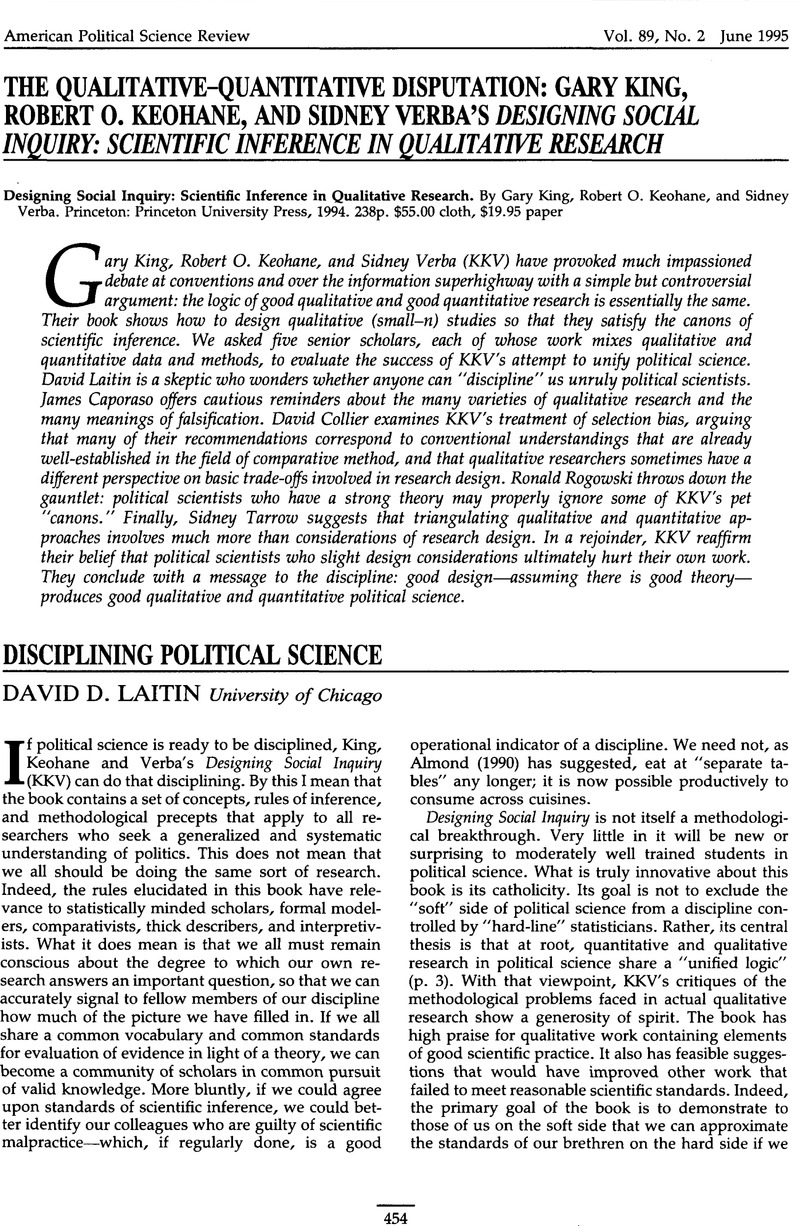Crossref Citations
This article has been cited by the following publications. This list is generated based on data provided by Crossref.
Yee, Albert S.
1996.
The causal effects of ideas on policies.
International Organization,
Vol. 50,
Issue. 1,
p.
69.
Collier, David
and
Mahoney, James
1996.
Insights and Pitfalls: Selection Bias in Qualitative Research.
World Politics,
Vol. 49,
Issue. 1,
p.
56.
Lustick, Ian S.
1996.
History, Historiography, and Political Science: Multiple Historical Records and the Problem of Selection Bias.
American Political Science Review,
Vol. 90,
Issue. 3,
p.
605.
Griffin, Larry J.
Caplinger, Christopher
Lively, Kathryn J.
Malcom, Nancy L.
McDaniel, Darren
and
Nelsen, Candice
1997.
Comparative-Historical Analysis and Scientific Inference: Disfranchisement in the U.S. South as a Test Case.
Historical Methods: A Journal of Quantitative and Interdisciplinary History,
Vol. 30,
Issue. 1,
p.
13.
Muzur, Amy G.
and
Parry, Janine
1998.
Choosing Not to Choose in Comparative Policy Research Design: The Case of the Research Network on Gender, Politics, and the State.
Policy Studies Journal,
Vol. 26,
Issue. 3,
p.
384.
Munck, Gerardo L.
1998.
Canons of research design in qualitative analysis.
Studies in Comparative International Development,
Vol. 33,
Issue. 3,
p.
18.
Sakamoto, Takayuki
1999.
Explaining Electoral Reform.
Party Politics,
Vol. 5,
Issue. 4,
p.
419.
Collier, David
and
Adcock, Robert
1999.
DEMOCRACY AND DICHOTOMIES: A Pragmatic Approach to Choices about Concepts.
Annual Review of Political Science,
Vol. 2,
Issue. 1,
p.
537.
Steinbauer, Franz
2000.
Patent-Rezepte für die Vergleichende Politikwissenschaft?.
Politische Vierteljahresschrift,
Vol. 41,
Issue. 2,
p.
340.
Baldwin, David A.
2000.
The Sanctions Debate and the Logic of Choice.
International Security,
Vol. 24,
Issue. 3,
p.
80.
Ragin, C.C.
2001.
International Encyclopedia of the Social & Behavioral Sciences.
p.
1519.
Kittel, Bernhard
2003.
Politische Ökonomie.
p.
385.
Hasenclever, Andreas
Mayer, Peter
and
Rittberger, Volker
2004.
Regime Consequences.
p.
183.
Sil, Rudra
2004.
Problems and Methods in the Study of Politics.
p.
307.
Sekhon, Jasjeet S.
2004.
Quality Meets Quantity: Case Studies, Conditional Probability, and Counterfactuals.
Perspectives on Politics,
Vol. 2,
Issue. 02,
Thomas, George
2005.
The Qualitative Foundations of Political Science Methodology.
Perspectives on Politics,
Vol. 3,
Issue. 04,
Hanson, Stephen E.
and
Kopstein, Jeffrey S.
2005.
Regime Type and Diffusion in Comparative Politics Methodology.
Canadian Journal of Political Science,
Vol. 38,
Issue. 1,
p.
69.
Johnson, James
2006.
Consequences of Positivism.
Comparative Political Studies,
Vol. 39,
Issue. 2,
p.
224.
Blake, Charles H
and
Klemm, Noah
2006.
Reconsidering the Effectiveness of International Economic Sanctions: An Examination of Selection Bias.
International Politics,
Vol. 43,
Issue. 1,
p.
133.
Clarke, Kevin A.
2007.
The Necessity of Being Comparative:Theory Confirmation in Quantitative Political Science.
Comparative Political Studies,
Vol. 40,
Issue. 7,
p.
886.




Comments
No Comments have been published for this article.